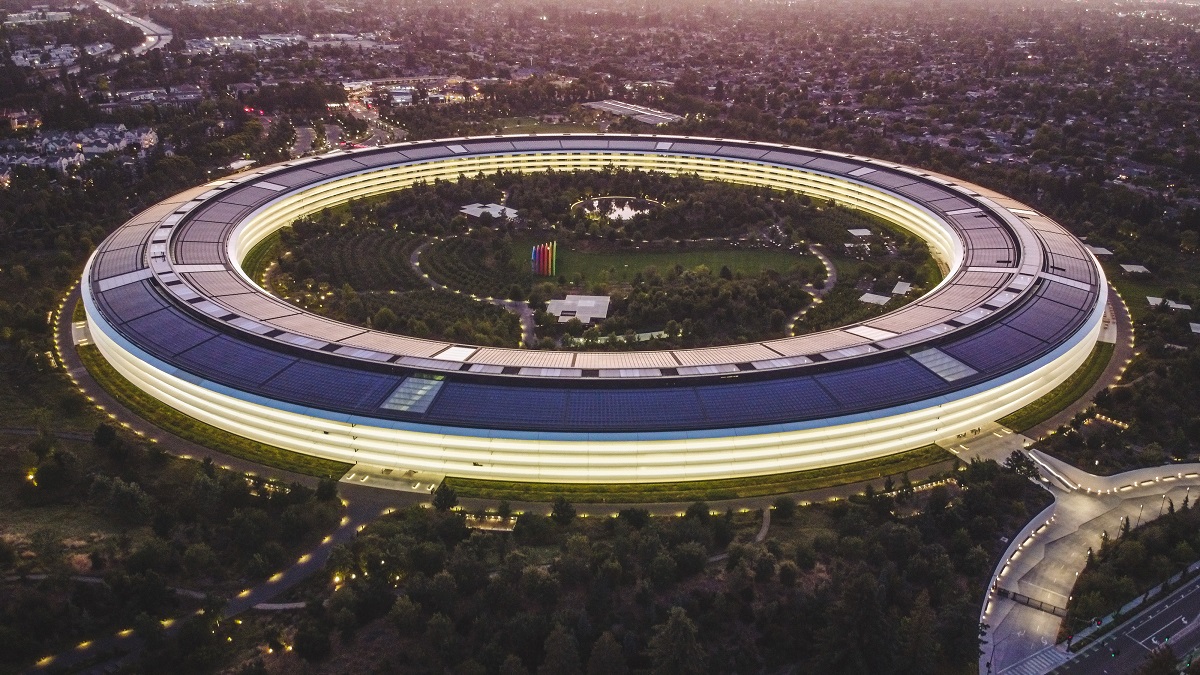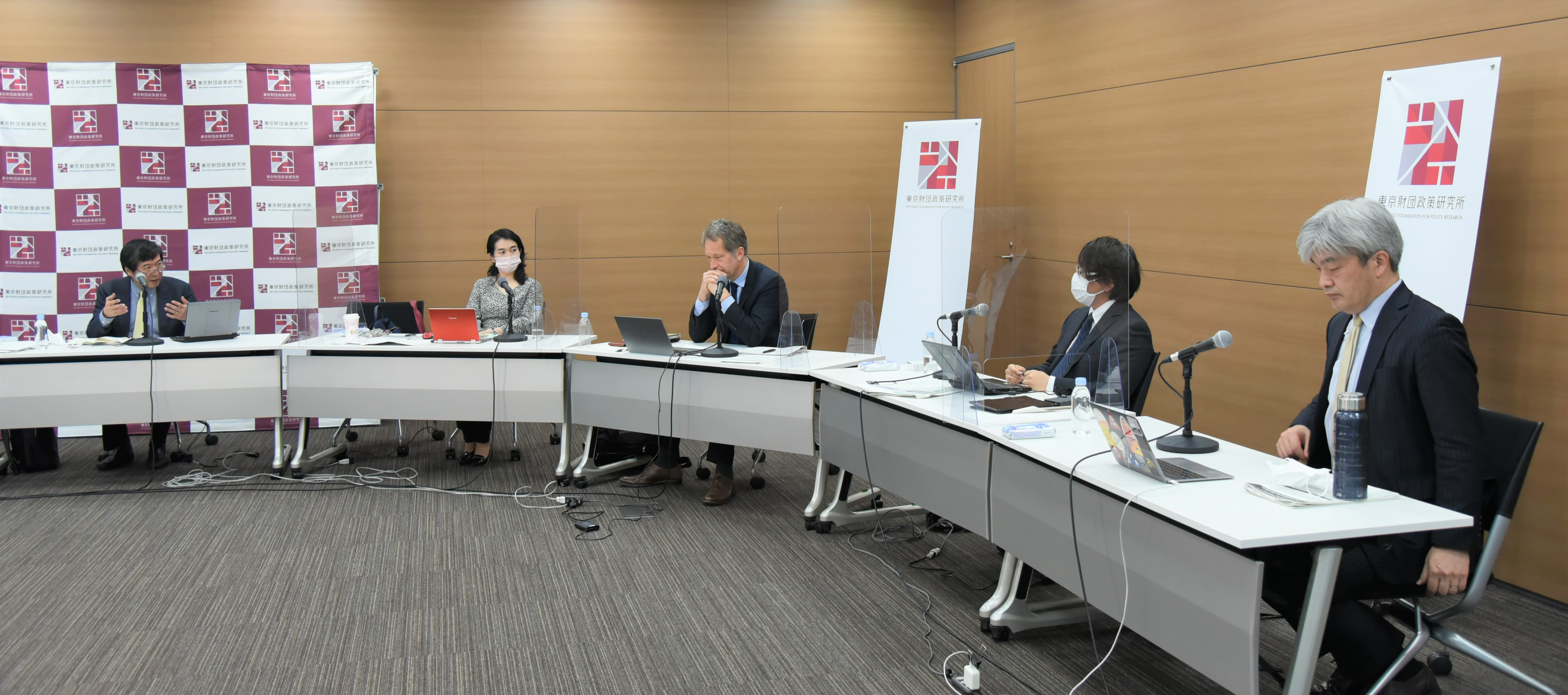
International Science and Technology Cooperation: Lessons from the OECD’s Work on Biotechnology and Implications for Japan
June 7, 2023
R-2023-002E
Introduction
From climate change to pandemics, humanity is confronting problems that demand a globally coordinated, transnational response. The development and application of advanced technology will unquestionably be critical to the resolution of these problems, but the resources of individual countries are limited. As a consequence, the need for international cooperation on technology and relevant policies has never been greater.
At the same time, an awareness of technology’s implications for each nation’s industrial competitiveness and security has given rise to concepts like strategic autonomy. As geopolitical tensions have risen, the securitization of technology has accelerated.[1] In this rapidly changing environment, how should Japan involve itself in international cooperation and the formation of international communities to support responsible progress in science and technology?
Since its inception, the Organization for Economic Cooperation and Development has promoted information sharing as the basis for policy consultation and cooperation in a variety of fields, including energy and the environment. It has also put considerable effort into promoting cooperation in the general policy domain of science, technology, and innovation (STI), largely through the activities of the Committee for Scientific and Technological Policy (CSTP).[2] Every two years, the CSTP publishes the Science, Technology, and Innovation Outlook, which introduces the latest global trends in STI policy.[3] Currently, the OECD is at work on a major project, S&T Policy 2025, drawing insights from multiple OECD projects to provide overarching guidelines and tools for STI policy design.
The organization also delves into policy issues linked to specific areas of advanced technology, as seen in its December 2019 recommendations on responsible innovation in neurotechnology.[4] The OECD’s work in the area of biotechnology extends back several decades. In the following sections, the organization’s activities and role in the field of biotechnology are introduced and their implications for Japan’s involvement in international sci-tech cooperation are explored.
OECD’s Work in the Field of Biotechnology
The 1980s and 1990s saw the rapid development and application of recombinant DNA technology. Eyeing the impending commercialization of genetically modified (GM) foods and other products, the CSTP began grappling with safety assessment before domestic regulators took up the issue and played a central role at this early stage. The principles of safety evaluation set forth in the OECD 1986 report Recombinant DNA Safety Considerations (Blue Book), which included the OECD Council’s recommendations,[5] and the 1993 Safety Evaluation of Foods Derived by Modern Biotechnology (Green Book)[6] had a major influence on the development of biotechnology standards and regulations. Even today, “case-by-case,” “history of safe use,” and the concept of safety assessment[7] presented in these two reports form the basis for the safety assessment of GM products in almost every country.
The arguments and concepts set forth in the Blue Book informed deliberations and rulemaking in more inclusive and binding international forums, such as the UN Convention on Biodiversity (which oversees the potential impact of genetically modified organisms released into the environment), and the intergovernmental Codex Alimentarius Commission (under the Food and Agriculture Organization and the World Health Organization), which compiles the Codex Alimentarius (Codex), a collection of internationally recognized food standards. At the same time, national governments were incorporating the OECD’s ideas on safety assessment into their own rules for evaluating the safety of recombinant DNA technologies. The same officials and scientists who built an early consensus through deliberations within the OECD were doubtless instrumental in spreading those ideas internationally and domestically. In the context of Japan, the Ministry of International Trade and Industry contributed actively to this process.[8]
Despite these early efforts to harmonize regulation internationally, large gaps have emerged between different countries’ approaches to risk management of GM products. For example, the European Union, emphasizing the precautionary principle, scrutinizes the process as well as the product, while the United States takes a more relaxed approach that assesses the final food product using the existing regulatory framework. Nonetheless, virtually all domestic regulators agree on the basic scientific concepts of food safety, thanks to the OECD’s pivotal role at the early stages. In this sense, the OECD functioned as a think tank, drawing up reports that anticipated problems before they emerged.[9] Indeed, the former chair of the Codex Ad Hoc Intergovernmental Task Force on Food Derived from Biotechnology (since dissolved), which was hosted by Japan, recently commented in retrospect that Codex discussions on the safety of GM foods would not have been possible if OECD deliberations had not first built a scientific consensus among the industrial countries.[10]
Since the late 1990s, the OECD’s Environment Directorate has been gathering information on biotechnology and its regulation from environmental, food, and feed authorities worldwide,[11] drawing up technical “consensus documents” on individual GM products,[12] and managing the BioTrack database.[13] As noted above, the regulation of recombinant DNA and GM products has fragmented into an international patchwork, and policies have diverged even more with the advent of genome editing and other new breeding techniques.[14] In 2018 the OECD held a conference on agricultural applications of genome editing and summarized the results in a published report, which contributed to policy learning by disseminating and explaining individual countries’ increasingly complex biotech regulations.[15] The Japanese Ministry of Agriculture, Forestry, and Fisheries, which had been seconding officials to the OECD Environment Directorate for some time, sent additional personnel at that time, and it continues this practice to this day.
In 2009, a major OECD report titled The Bioeconomy to 2030 predicted that expanding markets for biotechnology applications would fuel dramatic growth in this sector by 2030.[16] Widely cited as evidence for policy decisions, the report had a major impact at the national level, prompting many countries—including Japan—to draw up national bioeconomy strategies.
Today, considerable attention is focused on the emerging field of engineering biology, including synthetic biology. The OECD’s 2021 STI Outlook devotes a chapter to engineering biology and biofoundries,[17] raising emerging issues and policy implications and calling on governments to “establish and support pre-competitive infrastructure and collaborative platforms.” Meanwhile, researchers and other actors have also called for a global forum on engineering biology and synthetic biology.[18]
Functions of the OECD’s Work
Based on the foregoing discussion of the OECD’s work in the area of biotechnology, it is possible to identify several functions in which the organization supports the development of sound STI policy and responsible technological progress among its member states:
- Fostering an awareness of issues and formulating guidance to set a basic direction, harmonize policy, and build consensus: The OECD’s recommendations and other documents can have a major impact on international and domestic rulemaking, as seen in the early history of biotech safety assessment. Even reports and guidance documents with no binding force can influence behavior, since entities that deviate are subject to public “naming and shaming.” In addition, as exemplified by The Bioeconomy to 2030, forward-looking OECD reports can introduce useful concepts and provide countries with evidence to support national policymaking.
- Accumulating evidence and sharing experiences and best practices: The Environment Directorate’s work can function as a hub for information on regulatory best practices and a vehicle for learning, as it has done through its summaries of biotech developments at the national level, its BioTrack database, and its genome editing symposium. The OECD plays a vital role in providing direct access to the experiences of other countries. It can also provide an effective vehicle for publicizing Japan’s activities and raising its international profile. The OECD is building integrated online platforms, such as the AI Policy Observatory, to monitor and analyze relevant developments around the world. Similar “observatories” might be developed to monitor gene editing and other biotech fields.[19]
- Sharing technology governance concepts and methods: As noted above, in addition to its work in biotechnology and other specific domains, the OECD is engaged in building frameworks and guidelines to support technology governance as a whole. In Japan, there is a tendency to wait for a technology to take concrete shape in a particular sector before addressing its regulatory challenges. Japan’s technology policy should incorporate the kind of forward-looking technology assessment and anticipatory governance consistently advanced by the OECD.[20]
- Finally, the OECD plays an important role by virtue of its convening power, by which it brings diverse actors together for deliberation, and its network-building capacity.
Implications for Japan
These positive contributions notwithstanding, the OECD’s power to shape and influence policy has its limits. Fundamentally, the OECD’s guidance documents and recommendations are soft law with no binding force, and their utilization must be predicated on a sound grasp of the relative merits (and drawbacks) of soft law and hard law. Moreover, while the OECD is taking steps to extend its influence to nonmember countries, it must be remembered that the organization’s membership is far less comprehensive and diverse than that of the United Nations, which includes developing countries. All of that said, at a time when international society is fragmenting along multiple fault lines, it is more important than ever to promote discussion among like-minded entities that share the same basic values and roughly comparable technological capabilities.
We must also bear in mind the need for multifaceted, multilayered engagement and make the most of other frameworks for cooperation, such as the United Nations, regional intergovernmental organizations, bilateral and multilateral diplomatic channels, cross-sectoral platforms, and academic societies. Additionally, we should note that, while many of Japan’s research and development projects encourage international cooperation, engagements with foreign partners are not enough. As a nation, we need to boost our investment in the development of human resources (scholars in the natural and human sciences as well as administrative officials) capable of building networks and partnerships with a variety of international forums. We also need to beef up our efforts in the areas of R&D, global community building, and international rulemaking.
With the foregoing in mind, Japan must continue to reevaluate how best to engage with and profit from international society from the standpoint of building global communities, developing international rules, and boosting Japan’s presence and influence in the arena of science, technology, and innovation.
The original Japanese version of this article was published on April 6, 2023, https://www.tkfd.or.jp/research/detail.php?id=4232.
[1] See Kazuto Suzuki, “Toward a New Tech Policy for the Age of Economic Security,” Tokyo Foundation for Policy Research, February 28, 2022, https://www.tokyofoundation.org/research/detail.php?id=880.
[2] See Hideaki Shiroyama, “Transitions in Socio-Technical Systems: The OECD’s New Science, Technology, and Innovation Policies,” Tokyo Foundation for Policy Research, January 26, 2023, https://www.tokyofoundation.org/research/detail.php?id=935.
[3] The 2023 edition of STI Outlook, released in March 2023, was introduced at the March 17, 2023, symposium held at the Tokyo Foundation for Policy Research on “Toward the Transition of Socio-Technical Systems: Reflections on the OECD’s New Science, Technology, and Innovation Policy.” See https://www.tokyofoundation.org/research/detail.php?id=939.
[4] OECD, “Recommendation of the Council on Responsible Innovation in Neurotechnology,” OECD, 2019, https://www.oecd.org/science/recommendation-on-responsible-innovation-in-neurotechnology.htm.
[5] OECD, Recombinant DNA Safety Considerations: Safety Considerations for Industrial, Agricultural and Environmental Applications of Organisms Derived by Recombinant DNA Techniques, OECD, 1986.
[6] OECD, Safety Evaluation of Foods Derived by Modern Biotechnology: Concepts and Principles, OECD, 1993.
[7] As safety assessments for GM products as whole foods cannot be performed for practical reasons, the assessment is generally based on a comparison between the GM food and its conventional counterpart.
[8] Japan Bioindustry Association, OECD to Nihon no baiotekunoroji seisaku: Kagakuteki hohoron ga sendo suru anzen rongi (The OECD and Japan’s Biotechnology Policy: Safety Guided by Scientific Methodology), Japan Bioindustry Association, 1997.
[9] For a more detailed discussion, see Makiko Matsuo, “Shokuhin no anzensei o meguru kokusai goi no dainamizumu—idenshi kumikae shokuhin no jirei” (Dynamics of International Agreements on Food Safety: The Case of GM Foods), in Kagaku gijutsu no poritikusu (Politics of Science and Technology), ed. Hideaki Shiroyama, University of Tokyo Press, 2008.
[10] Makiko Matsuo et al., “Shinpojiumu: Codekkusu 60 shunen kinen pure-ibento—Codekkusu no 60 nen o furikaeru” (Symposium: Codex 60th Anniversary Pre-event: Looking Back on 60 Years of Codex), Shokuhin Eisei Kenkyu, March 2023, pp. 31–40.
[11] Each year the OECD’s Working Party on the Harmonisation of Regulatory Oversight in Biotechnology (WP-HROB) and Working Party on the Safety of Novel Foods and Feeds (WP-SNFF) publish reports on regulatory developments at the national level. See OECD, Biosafety-BioTrack, https://www.oecd.org/chemicalsafety/biotrack/.
[12] OECD, Consensus Documents: Work on Harmonisation of Regulatory Oversight in Biotechnology, https://www.oecd.org/chemicalsafety/biotrack/consensusdocumentsfortheworkonharmonisationofregulatoryoversightinbiotechnology.htm; OECD, Consensus Documents: Work on the Safety of Novel Foods and Feeds, https://www.oecd.org/chemicalsafety/biotrack/consensus-documents-safety-of-novel-foods-and-feeds.htm.
[13] OECDA, BioTrack Product Database, https://biotrackproductdatabase.oecd.org/default.aspx.
[14] Masashi Tachikawa and Makiko Matsuo, “Divergence and Convergence in International Regulatory Policies Regarding Genome-Edited Food: How to Find a Middle Ground,” Frontiers in Plant Science, vol. 14 (2023), https://www.frontiersin.org/articles/10.3389/fpls.2023.1105426/full.
[15] For an online report, see OECD, OECD Genome Editing Hub, https://www.oecd.org/environment/genome-editing-agriculture/. For proceedings, see Transgenic Research, vol. 28, supplement issue 2, https://link.springer.com/journal/11248/volumes-and-issues/28-2/supplement.
[16] OECD, The Bioeconomy to 2030: Designing a Policy Agenda, 2008, https://www.oecd.org/futures/long-termtechnologicalsocietalchallenges/thebioeconomyto2030designingapolicyagenda.htm.
[17] Biofoundries are highly automated facilities that integrate technologies oriented to bio-manufacturing and research in synthetic biology.
[18] See Thomas Dixon et al., “A Global Forum on Synthetic Biology: The Need for International Engagement,” Nature Communications, vol. 13 (2022), article no. 3516, https://www.nature.com/articles/s41467-022-31265-9. The authors call for an international forum to promote “track 1.5” policy-practitioner dialogue with the participation of eight communities, including the OECD and the Engineering Biology Research Consortium.
[19] See Sheila Jasanoff and J. Benjamin Hurlbut, “A Global Observatory for Gene Editing,” Nature, 555 (7697) (March 22, 2018), pp. 435–37.
[20] See STI Outlook 2023, chapter 6.
















